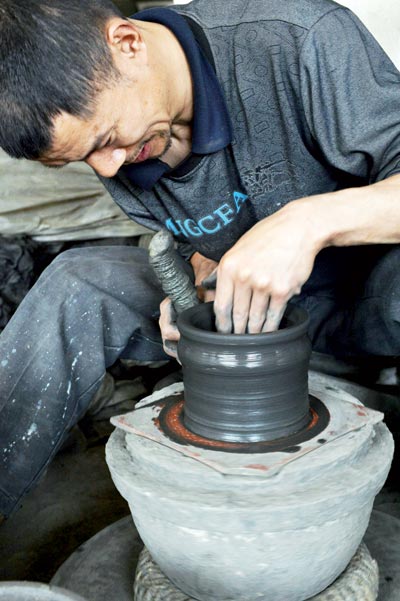
 |
| A craftsman at Yingjing kiln works on a potter's wheel at Yingjing, Sichuan province. (China Daily / Zhang Jiantang) |
The fire in a kiln of Yingjing county burns up to 1,500 degrees, flames blazing. Inside are rows of pots made of a special kind of clay found only here.
It's the first time the 100-year-old kiln has restarted its fire after the county experienced its worst-ever quake in April.
The quake caused cracks to the walls of the factory. After a simple repair, Zhu Qingping's factory started work again in mid-May.
"The pottery, regardless whether they were finished products or semi-finished ones, were shattered to pieces," says Zhu, the eighth generation to work in his family business.
The county in the western part of Sichuan province has a more than 2,000-year-old history of producing pottery. The traditional techniques of pottery making are still widely used today.
Zhu says all the items in Yingjing are handmade. Most workshops are family-owned. Thus the output is very small.
In total, Zhu's factory produces about 20,000 pieces of pottery a month, most of which are soup pots which are considered less complicated.
Made of a unique type of clay found only in the county, the simple yet ancient pottery produced here is more porous and has a better adsorption rate compared to the purple clay pottery in Yixing, Jiangsu province, for instance.
The white and yellow clay combined with local coal ash are made into silver gray soup tureens, teapots and even artwork. But before the firing process, the items are muted black. That's why they are also called black pottery.

















 Turn white rabbit to 'gold' - A young entrepreneur's goal
Turn white rabbit to 'gold' - A young entrepreneur's goal


![]()
